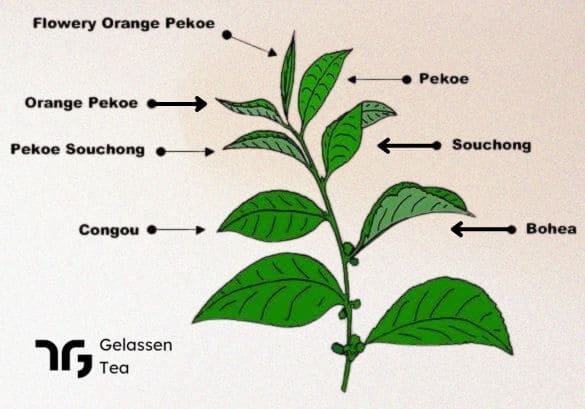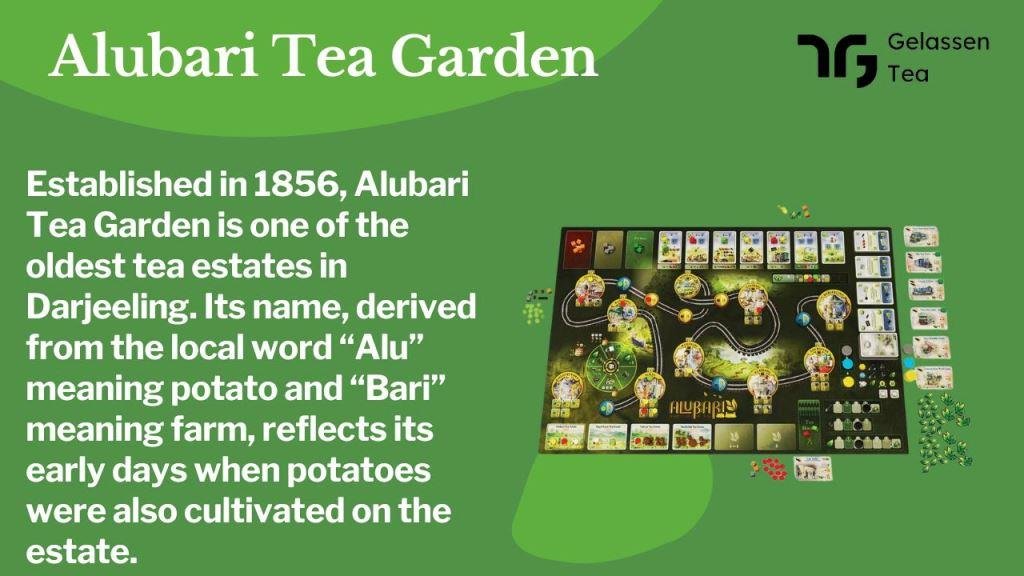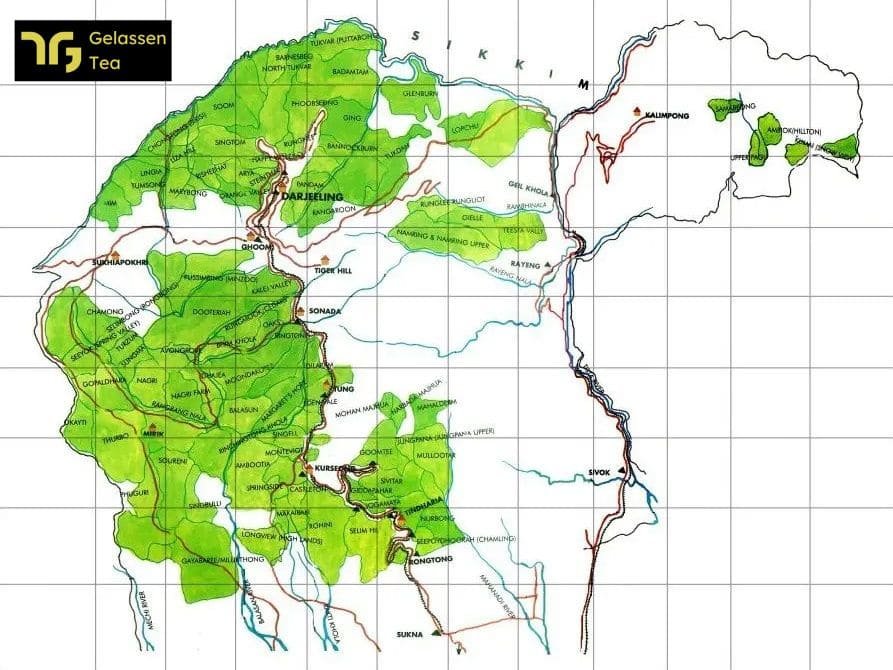Grades of Tea: In the tea industry, tea leaf grading involves assessing products based on the quality and condition of the tea leaves. The highest grades are known as “orange pekoe”, while the lowest are “fannings” or “dust”.
Pekoe tea grades are categorized into different qualities, each determined by the number of adjacent young leaves (two, one, or none) picked along with the leaf buds. The top-quality pekoe grades consist solely of the leaf buds, which are carefully picked using the fingertips to avoid bruising, with no use of fingernails or mechanical tools.
When the tea is crushed to make bagged teas, it is known as “broken”, such as in “broken orange pekoe” (BOP). These lower grades include fannings and dust, which are tiny remnants created during the sorting and crushing processes.
Orange pekoe is often abbreviated as “OP”. The grading system also includes categories higher than OP, primarily determined by leaf wholeness and size.
Orthodox teas classified as broken, fannings, and dust have slightly different grades. CTC teas, made of mechanically rendered leaves into uniform fannings, follow a separate grading system.
General Classification
Orange Pekoe
Orange pekoe, also spelled pecco, or OP, is a term used in the Western tea trade to categorize a specific type of black tea (orange pekoe grading). While it is believed to have originated in China, these grading terms are primarily used for teas from Sri Lanka, India, and other countries, and are not commonly used in Chinese-speaking regions. The grading system is based on the size of processed and dried black tea leaves.
In the tea industry, orange pekoe refers to a medium-grade black tea made up of many whole tea leaves of a specific size. However, in some regions like North America, the term is often used more broadly to describe any generic black tea, though it is usually marketed to consumers as a specific variety of black tea.
The highest-graded teas in this system come from new flushes (pickings), including the terminal leaf bud along with a few of the youngest leaves. Grading is determined by the “size” of the individual leaves and flushes, which is judged by their ability to pass through screens of special meshes ranging from 8–30 mesh.
This also determines the “wholeness” or level of breakage of each leaf, which is also part of the grading system. While size and wholeness are not the only factors in determining quality, they have a significant impact on the taste, clarity, and brewing time of the tea.
Outside the context of black-tea grading, the term “pekoe” (or occasionally, orange pekoe) refers to the unopened terminal leaf bud (tips) in tea flushes. Phrases like “a bud and a leaf” or “a bud and two leaves” are used to describe the “leafiness” of a flush, and are used interchangeably with pekoe and a leaf or pekoe and two leaves.
Etymology
The origin of the word “pekoe” is uncertain, with various theories proposed.
One explanation suggests that it is derived from the transliterated mispronunciation of the Amoy (Xiamen) dialect word for a Chinese tea known as “white down/hair.” Rev. Robert Morrison (1782–1834) listed “pekoe” in his Chinese dictionary (1819) as one of the seven sorts of black tea “commonly known by Europeans,” referring to the down-like white “hairs” on the leaf and the youngest leaf buds. Another hypothesis is that the term comes from the Chinese báihuā, meaning “white flower,” and refers to the bud content of pekoe tea.
Sir Thomas Lipton, the 19th-century British tea magnate, is widely credited with popularizing, if not inventing, the term “orange pekoe” for Western markets. The “orange” in orange pekoe is sometimes mistakenly thought to imply the tea has been flavored with orange or is associated with oranges, but it is unrelated to the tea’s flavor. There are two explanations for its meaning, although neither is definitive.
Firstly, the Dutch House of Orange-Nassau, now the royal family, was already the most respected aristocratic family during the Dutch Republic and controlled the de facto head of state position (Stadtholder) of Holland and Zealand. The Dutch East India Company, which played a central role in bringing tea to Europe, may have marketed the tea as “orange” to suggest association with the House of Orange.
Secondly, the color theory suggests that the copper color of a high-quality, oxidized leaf before drying, or the final bright orange color of the dried pekoes in the finished tea, may be related to the name. These pekoes usually consist of one leaf bud and two leaves covered in fine, downy hair. The orange color appears when the tea is fully oxidized.
Fannings
Fannings are tiny pieces of tea that remain after higher grades of tea have been collected for sale. Traditionally, these were seen as the byproducts of producing high-quality leaf teas like orange pekoe. Fannings with very small particles are sometimes referred to as dust.
Both fannings and dust are considered the lowest grades of tea, distinguished from broken-leaf teas, which have larger leaf pieces. However, fannings from premium teas can still be more expensive and flavorful than whole leaves from cheaper teas.
Despite being traditionally seen as low-quality, fannings have seen significant demand in the developing world over the past century as tea drinking has become more popular. Tea stalls in India, the South Asian subcontinent, and Africa favor dust tea because it is affordable and produces a strong brew, resulting in more cups per measure of tea dust.
Due to their small size, fannings are usually brewed using a tea infuser. They are also commonly used in most tea bags, although some companies offer tea bags containing whole-leaf tea.
Certain exporters specialize in broken-leaf teas, fannings, and dusts as their primary focus.
Grades
Choppy contains many leaves of various sizes. Fannings are small particles of tea leaves used almost exclusively in tea bags. Flowery consists of large leaves, typically plucked in the second or third flush with an abundance of tips. Golden flowery includes very young tips or buds (usually golden in colour) that were picked early in the season. Tippy includes an abundance of tips.
Whole leaf grades
The grades for whole leaf orthodox black tea are: Ceylon orange pekoe (OP) grades
OP: Orange Pekoe: main grade, consisting of long wiry leaf without tips
OP1: more delicate than OP; long, wiry leaf with the light liquor
OPA: bolder than OP; long leaf tea which ranges from tightly wound to almost open
OPS: Orange Pekoe Superior: primarily from Indonesia, similar to OP
FOP: Flowery Orange Pekoe: high-quality tea with a long leaf and few tips, considered the second grade in Assam, Dooars, and Bangladesh teas, but the first grade in China
FOP1: limited to only the highest quality leaves in the FOP classification
GFOP: Golden Flowery Orange Pekoe: higher proportion of tip than FOP. Top grade in Milima and Marinyn regions, uncommon in Assam and
Darjeeling
TGFOP: Tippy Golden Flowery Orange Pekoe: the highest proportion of tip, main grade in Darjeeling and Assam
TGFOP1: limited to only the highest quality leaves in the TGFOP classification
FTGFOP: Finest Tippy Golden Flowery Orange Pekoe: highest quality grade
FTGFOP1 or STGFOP or SFTGFOP: limited to only the highest quality leaves in the FTGFOP classification
Broken leaf grades
BT: Broken Tea: Usually a black, open, fleshy leaf that is very bulky. Classification used in Sumatra, Ceylon (Sri Lanka), and some parts of Southern India.
BP: Broken Pekoe: Most common broken pekoe grade. From Indonesia, Ceylon (Sri Lanka), Assam and Southern India.
BPS: Broken Pekoe Souchong: Term for broken pekoe in Assam and Darjeeling.
FP: Flowery Pekoe: High-quality pekoe. Usually coarser with a fleshier, broken leaf. Produced in Ceylon (Sri Lanka) and Southern India, as well as in some parts of Kenya.
BOP: Broken Orange Pekoe: Main broken grade. Prevalent in Assam, Ceylon (Sri Lanka), Southern India, Java, and China.
F BOP: Flowery Broken Orange Pekoe: Coarser and broken with some tips. From Assam, Ceylon (Sri Lanka), Indonesia, China, and Bangladesh. In South America, coarser, black broken.
F BOP F: Finest Broken Orange Pekoe Flowery: The finest broken orange pekoe. Higher proportion of tips. Mainly from Ceylon’s “low districts”.
G BOP: Golden Broken Orange Pekoe: Second grade tea with uneven leaves and few tips.
GF BOP1: Golden Flowery Broken Orange Pekoe 1: As above, but with only the highest quality leaves in the GFBOP classification.
TGF BOP1: Tippy Golden Flowery Broken Orange Pekoe 1: High-quality leaves with a high proportion of tips. Finest broken First Grade Leaves in Darjeeling and some parts of Assam.
Fannings grades
PF: Pekoe Fannings
OF: Orange Fannings: From Northern India and some parts of Africa and South America.
FOF: Flowery Orange Fannings: Common in Assam, Dooars, and Bangladesh. Some leaf sizes come close to the smaller broken grades.
GFOF: Golden Flowery Orange Fannings: Finest grade in Darjeeling for tea bag production.
TGFOF: Tippy Golden Flowery Orange Fannings.
BOPF: Broken Orange Pekoe Fannings: Main grade in Sri Lanka, Indonesia, Southern India, Kenya, Mozambique, Bangladesh, and China. Black-leaf tea with few added ingredients, uniform particle size, and no tips.
Dust grades
D1: Dust 1: From Sri Lanka, Indonesia, China, Africa, South America, Southern India & Bangladesh.
PD: Pekoe Dust
PD1: Pekoe Dust 1: Mainly produced in India.
Other terms
Musc: Muscatel
Cl: Clonal
Ch: China varietal
Qu: Queen jat
FBOPF Ex. Spl: Finest Broken Orange Pekoe Flowery (Extra Special)
FP: (Flowery Pekoe )
S: Pekoe Souchong
S: Souchong
BOF: Broken Orange Fannings
BPF: Broken Pekoe Fannings
RD: Pekoe Dust/Red Dust
FD: Fine Dust
GD: Golden Dust
SRD: Super Red Dust
SFD: Super Fine Dust
BMF: Broken Mixed Fannings







Leave a Reply